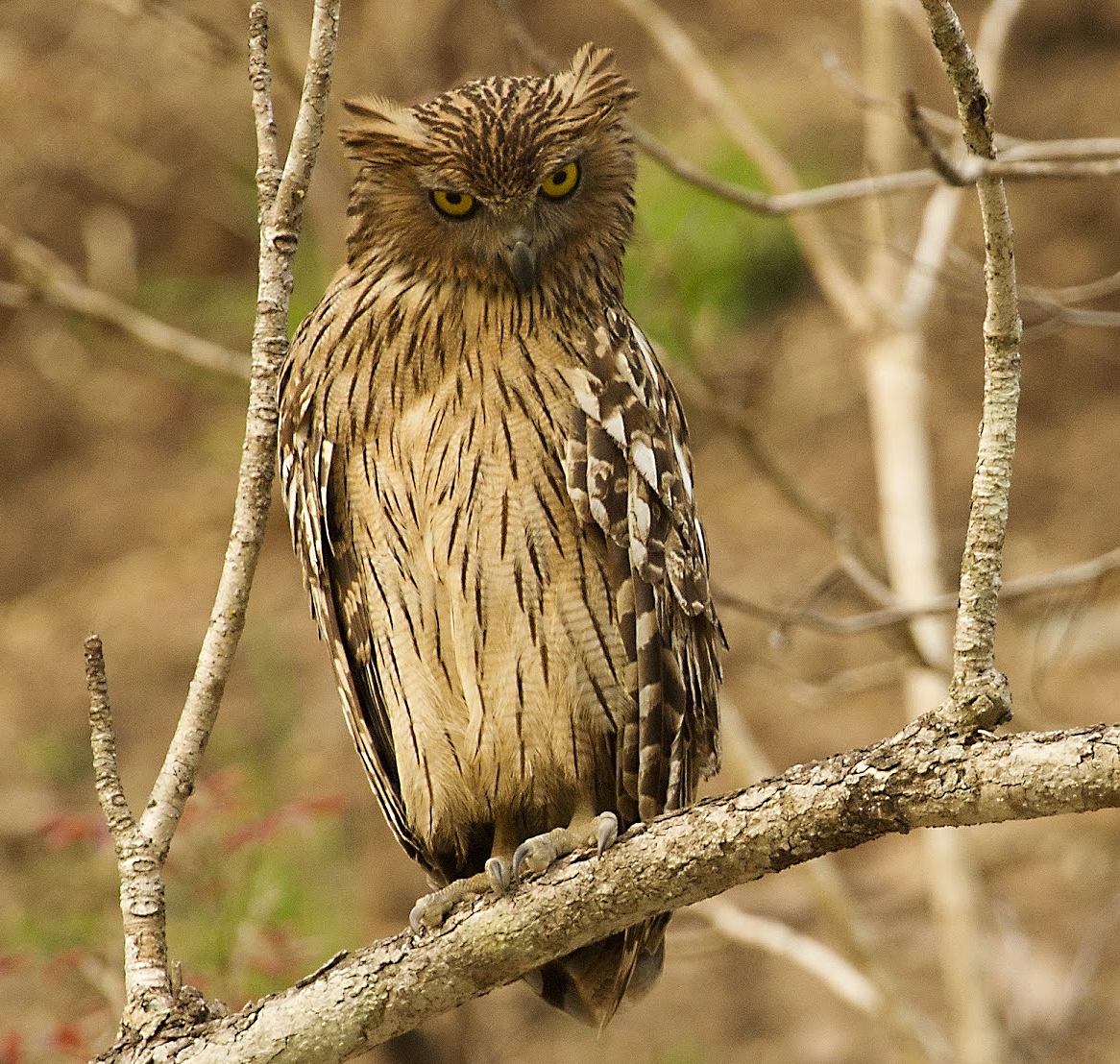 |
| Photo by Kata Mahakayi (Project Noah) |
Common name:
brown fish-owl (en); bufo-pescador-castanho (pt); kétoupa brun (fr); búho pescador de Ceilán (es); wellenbrust-fischuhu (de)
Taxonomy:
Order Strigiformes
Family Strigidae
Range:
This species is found in southern Asia, from eastern Pakistan, throughout India, Nepal and Bangladesh, and into southern China, Vietnam and Malaysia.
Size:
These large owls are 48-57 cm long and weigh 1,1-2,5 kg.
Habitat:
The brown fish-owl is found in both moist and dry tropical forests, especially in open areas, and also in mangroves and plantation, but always near wetlands such as freshwater marshes, lakes and rivers. It is present from sea level up to an altitude of 1.900 m.
Diet:
They feed mainly on freshwater fishes, frogs, crabs and other crustaceans, but also some small mammals, birds, reptiles and occasionally carrion.
Breeding:
Brown fish-owls breed in November-March. The nest is made of sticks and placed in a rock crevice or a cleft in a bank. There the female lays 1-2 eggs which are incubated for about 38 days. The chicks fledge some 7 weeks after hatching.
Conservation:
IUCN status – LC (Least Concern)
This species has a very large breeding range and is reported to be generally uncommon.
The population is suspected to be in decline owing to ongoing habitat destruction and the use of rodenticides may also have a negative effect on this species.







